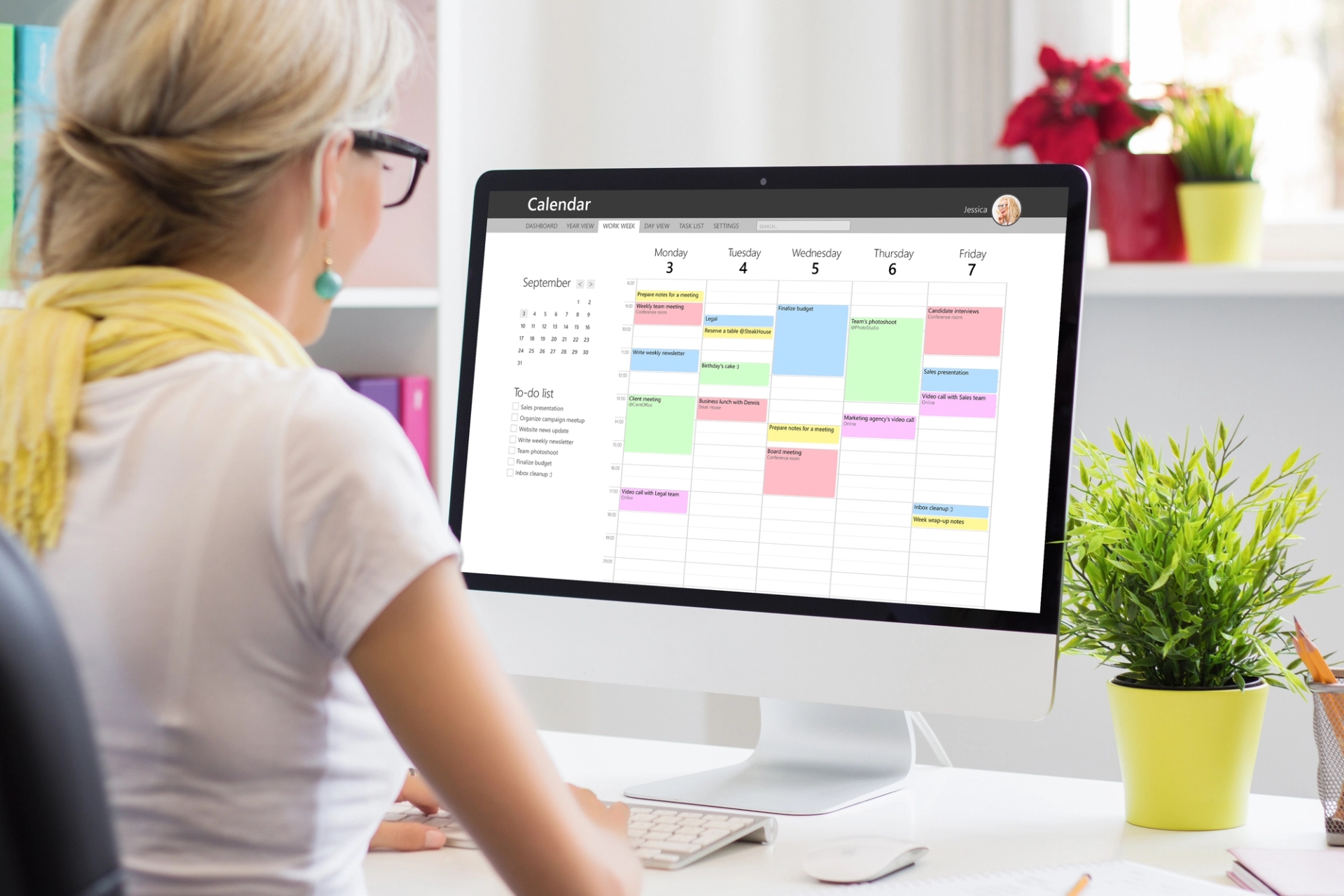The Ultimate Virtual Event Planning Checklist [2025 Edition]
Hosting a virtual event? Use this easy-to-follow virtual event checklist to plan a successful, engaging, and stress-free experience from start to finish.

What Are Virtual Events?
Virtual events are online experiences where people gather using digital tools instead of meeting in person.
Virtual events provide a flexible way to reach a broader audience, reduce costs, and collect real-time attendee data. They also allow for better content tracking and post-event engagement.
This guide will walk you through every phase of virtual event planning — from setup to post-event engagement.
Why You Need a Virtual Event Checklist
Virtual events are now a key part of the modern event strategy. Whether you're organizing a product launch, a webinar, or a virtual conference, a lot is required to ensure you reach a wider audience.
A detailed virtual event planning checklist helps you stay organized, engage attendees effectively and create a virtual experience which feels just as valuable as an in-person event. It also improves your chances of delivering a smooth, ROI-driven and engaging experience for your virtual attendees.
Before the Event: The Planning Stage
Every event is created for a specific purpose. Start your virtual event planning process by laying a strong foundation. At this step, you set the tone for your actual event. This stage ensures you're clear on your goals, budget, content, and audience
Define Event Objectives
Defining the objects clearly well before the virtual event helps in clear roadmap to be followed efficiently to minimize last minute stress and errors.
Clarify the Purpose of Your Event
First, define what you’re trying to achieve: Are you looking to generate leads, educate your audience, promote a product, or build community?
Knowing your purpose helps you planning all other detail, from selecting speakers to strategizing content for future events.
Set Specific Goals
It is important to make your event goals measurable and realistic. For example, you may want 500 registrations, 200 live attendees, or 50 qualified leads. You should know what you are targeting and why. These targets help you in evaluating your event performance. You can use various event planners available online to do this for you.

Determine Your Virtual Event Budget
Your virtual event budget will vary from your in-person event budgets. Though, you're not booking a physical venue, virtual events still come with expenses. A well-structured virtual event budget might include:
- A virtual event platform subscription
- Fees for keynote speakers
- Design, branding, and production costs
- Event promotion and advertising
- Moderators and tech supportYou must use a virtual event planner tool to ensure all your expenses are managed at one place.
Choose the Right Virtual Event Platform
Your platform is your venue. Choose one that fits your virtual event design and needs. While Zoom is ideal for small webinars, platforms like Azavista, offer features for larger, multi-day conferences with multiple sessions. Look for:
- Breakout rooms
- Live polling and Q&A
- Networking tools
- Attendee data analytics
- On-demand session access
Video production quality and connectivity are vital for the success of a virtual event. Try to have platforms which provide mobile access. Mobile event apps enhance attendee engagement by providing messaging tools and easy session access.
Design Your Content Strategy before the Virtual event Planning
The success of virtual events relies heavily on engaging content. Build a content plan that blends education and entertainment. Mix formats like panel discussions, fireside chats, interactive workshops, and live Q&A. Include engaging visuals and live polling to keep attendees involved.
Build an Engaging Event Schedule
Plan a schedule that balances learning and engagement. Include short, punchy sessions, concurrent tracks for variety, and scheduled breaks. Feature interactive moments like quizzes and opportunities for networking. Share your agenda on the event website so attendees know what to expect.
Establish a production schedule that includes all timelines and technical requirements for the event.

Select the Right Speakers for Virtual Conference
Your speakers represent your brand. Choose people who are engaging, industry-relevant, and comfortable using video conferencing tools. Perform a dry run of all sessions with presenters before the live event to ensure a smooth execution. You can also schedule tech rehearsals with them, to ensure everyone is camera-ready and confident.
Promote Your Event Strategically
Start promoting your online event weeks in advance. Engage the potential attendees through a mix of email campaigns, social media, paid ads, and influencer partnerships. Include a clear registration form and use a branded event hashtag for visibility. A well-designed landing page and clear communication helps convert interest into sign-ups.
Enhance Attendee Experience
Make registration easy with a user-friendly form, clear pricing, and automated confirmations—while collecting key details like time zones and accessibility needs. Ensure inclusivity with captions, translations, and pre-event emails that prepare attendees for a smooth virtual experience.
Registration and Ticketing for the Event
Make registration simple and accessible for your target audience of the virtual event. Use an easy-to-navigate event website with a clear registration form that collects essential attendee data.
If you’re charging for access, set transparent pricing and offer early-bird or group discounts. Sending automated confirmation emails with event details helps keep potential attendees informed and excited.
Plan on collecting registrant's time zone information and accessibility requirements.

Prioritize Accessibility
Hosting virtual events should mean inclusivity. Make your event accessible by offering live captions, translations, and screen-reader compatible content. Use high-contrast visuals and legible fonts to support all participants.
Try to have platforms which provide mobile access. Mobile event apps enhance attendee engagement by providing messaging tools and easy session access.
Send Out Pre-Event Information with Event Details
A few days before the event, send a "Know Before You Go" email. Include event details like login instructions, session times, platform tips, and how to engage with others during the event.
During the Virtual Event: Execution and Engagement
Now it’s time to bring your event to life. A successful event day relies on preparation, flexibility, and great attendee support.
Test Your Technology before you start
Start every session early to check the device and network. This is a must to have step before your event starts. Hold a final tech rehearsal to test:
- Microphone
- Cameras
- Internet speed
- Screen sharing
- Backup systems
Having a strong tech setup ensures your virtual attendees have a smooth experience. This is also the time, when you can identify your last-minute glitches while event planning.
Keep Attendees Engaged
In virtual events, event organizers often find it difficult to create engagement as compared to in person events. However, the success of an event, highly depends on how much your audience is hooked during the event. Throughout, keep energy levels high by involving attendees:
- Use chat boxes and polls
- Ask live questions
- Host short games
- Shout out participants during sessions
- Breakout sessions
These interactive features will help you in turning passive viewers into active participants.

Enable Virtual Networking Opportunities with Target Audience
When people are attending virtually, it is often difficult to about others as compared to in person events. So, you must encourage attendees to connect with each other through breakout rooms, one-on-one appointments, and group chats. These virtual equivalents of face-to-face interaction help build meaningful relationships and replicate the feel of in-person conferences.
Monitor the Event in Real Time
Have event planners or moderators monitor the live event to catch issues early. Watch for drop-off rates, platform performance, and audience engagement while the event is going on. This will allow you to adjust and pivot, before it disrupts the attendee experience.

After the Event: Review and Improve
Your job isn’t done when the event ends. Post-event actions can determine how well your event is remembered and also, how will your future events will perform. User event planners to analyze your event. You can use post event follow ups in form of emails, surveys, thank you notes to stay in touch with your attendees and promoters.
Distribute a Post-Event Survey to Improve on Your Next Virtual Event
This is important to understand how your attendees engaged after your virtual event planning. You should send out a survey within 48 hours to collect feedback on:
- Content quality
- Technical performance
- Favorite sessions
- Suggestions for improvement
Use this feedback to improve your next virtual event.
Review Your Event & Attendee Data
Dive into attendee insights to measure virtual event success:
- Registrations vs. actual attendance
- Audience engagement levels
- Session popularity
- Chat and poll activity
This event data, which can easily be gathered through event planners, can help you improve post event follow up, promotion strategies and event performance.

Use The Content Created for Promotion
Virtual events provide an incredible content library. Most events can be turned into blog posts, short videos, or highlight reels for social media. This way, even those who missed the event can benefit. Also, you can continue to create engage with the larger audience to create interest.
Hold a Team Debrief after a Successful Virtual Event
Review the production schedule, logistics, and event goals with your team. Talk about what worked, what didn’t, and how to improve for the next event. Document everything for more efficient planning next virtual event.
Sponsors and Exhibitors Feedback
Follow up with sponsors and exhibitors after the event to thank them for their support and assess their ROI.
Summary: How to Make Your Virtual Event a Success
Planning a virtual event involves more than just putting together a few slides and logging into Zoom. It’s a comprehensive event planning process that requires strategy, collaboration, and the right technology.
From building an event website and choosing an event platform to engaging attendees and collecting feedback, this virtual event planning checklist template covers everything you need for event success. Whether you're organizing hybrid events, department meetings, or multi-day conferences — the key is in the details.
Use this event planning guide to host the best virtual event possible, and set the stage for even better future virtual or hybrid events.
Related Resources:
More Event Management











